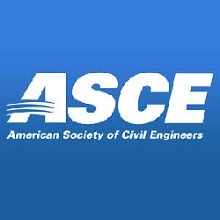
آزمایش دیوار برشی فولادی با ستون مرکب نیم بسته و اتصال قاب تیر RBS
چکیده
یک دیوار برشی فولادی با اتصالات قاب ستون مرکب نیم بسته (PEC) و تیر با مقطع کاهش یافته (RBS) در مقیاس بزرگ در دانشگاه آلبرتا برای بررسی رفتار سیستم و ارزیابی پارامترهای موثر در رفتار لرزه ای این سیستم مورد آزمایش قرار گرفت. از تیر با مقطع RBS به دلیل کاهش نیاز اتصال تیر- ستون و دستیابی به عملکرد لرزه ای بهبود یافته استفاده شد. تحت بار چرخه ای شبه استاتیکی تا زمان مشاهده خرابی شدید، نمونه ها مشخصات مطلوبی مانند سختی الاستیک، شکل پذیری و ظرفیت اتلاف انرژی بالایی را نشان دادند. استفاده از اتصال RBS گزینه مناسبی برای بهبود عملکرد لرزه ای این نوع از دیوار ها می باشد. نتایج ازمایش نشان داد که جزییات PEC نقش مهمی در بهبود عملکرد لرزه ای نمونه ایفا می کند. بر اساس مشاهدات این آزمایش و مطالعه آزمایشگاهی قبلی، چندین دستورالعمل طراحی و جزئیات ارائه شده است.
مقدمه
دیوارهای برشی فولادی یک سیستم شناخته شده برای مقاوم کردن سازه ها در برابر بارهای جانبی نظیر باد و زلزله هستند. این سیستم شامل ورق فولادی پرکننده نازک و قاب پیرامونی تیر و ستون است. این سیستم به دلیل ظرفیت پس کمانشی ورق پرکننده، مقاومت و سختی بالایی دارد (عمل میدان کششی). برای توسعه کارآمد و نسبتا یکنواخت میدان کششی در ورق پرکننده برای عملکرد لرزه ای موثر، سختی محوری کافی برای تیر و ستون باید فراهم شود. علاوه بر نیروی ناشی از میدان کششی ورق پرکننده (فشاری در یک ستون و کششی در ستون دیگر)، ستون ها باید نیروی ثقلی ناشی از بار مرده و زتنده را تحمل کنند. دستفن و درایور (2008، 2009) الزامات سختی محوری برای ستون و تیر در بالای دیوار برشی فولادی، همچنین تاثیر صلبیت اتصالات بر این الزامات را بررسی کردند. استاندارد طراحی سازه های فولادی کانادا [CSA S16-14(CSA 2014)] و AISC الزامات لرزه ای سازه های فولادی [ANSI/AISC 341-10 (AISC 2010)] برای سختی محوری اعضای مرزی مقادیر حداقل تعیین کرده اند. به دلیل این الزامات نیاز سختی، ستون مرکب گزینه مناسب برای سیستم دیوار برشی فولادی می باشد. برای سهولت اجرا و به طور کلی هزینه اجرا در ساختمان های بلند، گروه کانام ستونهای مرکب نیم بسته شده (PEC) را معرفی کردند (وینسنت و ترمبلی 2001). ستونهای PEC شامل سه ورق نسبتا نازک است که اجزای مقطع H شکل را تشکیل می دهند. پیوند های عرضی در نزدیکی سر دو بال در فواصل مناسب برای افزایش مقاومت کمانشی آن ها جوش می شوند. استفاده از ورق با ضخامت یکسان برای بال و جان برای نصب سریع اسکلت و استفاده از جرثقیل سبک تر و قالب ساده تر از مزایای این نوع ستون کامپوزیت است.
Abstract
A large-scale steel plate shear wall with partially encased composite (PEC) columns and reduced beam section (RBS) frame connections was tested at the University of Alberta to investigate the behavior of the system and quantify some key characteristics related to seismic design of this system. The use of RBS connections was intended to reduce the demand on the beam-to-column connection and obtain improved seismic performance. Subjected to quasi-static cyclic load until severe damage was observed, the specimen showed desirable characteristics such as high elastic lateral stiffness, ductility, and energy dissipation capacity. The use of RBS frame connections was proven to be a viable option to improve the seismic performance of these walls. The test observations indicated that the detailing of the PEC columns played an important role in improving the seismic performance of the specimen. Several design and detailing recommendations have been made based on the observations during this test and previous experimental studies.
Introduction
Steel plate shear walls are a well-known system for bracing structures against lateral loads such as wind or earthquake. They consist of a thin steel infill plate inside a surrounding frame of beams and columns. The strength and stiffness of this system is highly dependent on the post-buckling capacity of the infill plate (i.e., tension field action). To develop an efficient and fairly uniform tension field in the infill plate for effective seismic performance, adequate flexural stiffness of the columns and beams in the surrounding frame must be provided. In addition to the forces introduced into the columns due to anchorage of the tension field in the infill plate (compression in one column and tension in the other), the columns also carry the gravity forces introduced by dead and live loads. Dastfan and Driver (2008, 2009) studied the flexural stiffness requirements for the columns and the beam at the top of steel plate shear walls, as well as the effect of the frame connection rigidity on these requirements. The Canadian steel design standard [CSA S16-14 (CSA 2014)] and the AISC seismic provisions for structural steel buildings [ANSI/AISC 341-10 (AISC 2010)] specify the minimum flexural stiffness requirements for frame elements surrounding the infill plates. These demanding stiffness requirements make the composite column a viable option for steel plate shear wall systems.
چکیده
مقدمه
نمونه مورد آزمایش ، ابزار و فرآیند آزمایش
مشاهدات آزمایش و نتایج
ارزیابی نتایج آزمایش
سختی جانبی و شکل پذیری تغییرمکان
ظرفیت اتلاف انرژی
نتیجه گیری
Abstract
Introduction
Test Specimen, Test Setup, and Instrumentation
Test Observations and Results
Evaluation of Test Results
Lateral Stiffness and Displacement Ductility
Energy Dissipation Capacity
Conclusions
- ترجمه فارسی مقاله با فرمت ورد (word) با قابلیت ویرایش، بدون آرم سایت ای ترجمه
- ترجمه فارسی مقاله با فرمت pdf، بدون آرم سایت ای ترجمه
